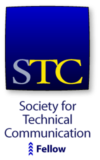
ClearPath assesses your existing workflow structure before moving on to document the existing content management system. Focusing on how information and data moves through the workflow, we advise on potential automation improvements.
Workflow Analysis
Determine the roles and responsibilities of Publications Staff. Use information to define the workflow for optional automation
Document Analysis
- Identify content/documents being produced in the Content Management System and method of distribution (Training Materials, Knowledge Base, Manuals)
- Analyze document type samples for content, structure and reusable content standardization
- Implement document standardization changes
- Define data structures
- Define and implement automated formats
Information Model
- Define logical structure of existing documents
- Name all components of a document as elements in the DTD and validate to produce well-formed XML
- Customize DTD for elements
CMS Requirements
When developing requirements for a CMS some major points to address are:
- IT support
- Support for information model (DITA, DocBook)
- Support for content reuse
- Ease of user interface
- Ability to store and preview illustrations
- Support encoding for all required languages, translation streaming and branching capacities
- Support for granularity that addresses snippets of content for authoring as well as segments in translation memory
- Automated, multi-channel publishing
- Database usage (relational or native-XML) focusing on systems that handle XML object hierarchies and attributes through pointers rather that systems that uses tables and relational calculus.
- Database scalability and portability
- Metadata capabilities and content searchability
- Traditional installation or hosted, on-demand model
- Processing requirements
- Product support
- Cost
Integrate with Translation Vendor
Because translation must be an integral part of the content lifecycle, it is important to investigate the impact of moving to structured authoring with language service providers. If current translation memory contains style-tagged memory it is important to address compatibly with structured content and XML. Failure to address this aspect of the migration will likely result in substantially increased translation costs and file handling problems.
Implementation
After the assessment is complete, ClearPath coordinates with users and administrators to recommend hardware and software enhancements. With all components in place, ClearPath recommends a full implementation course.
Implementation includes installation and testing as well as training and support for personnel. As the project moves forward, legacy files can be rolled into the process bringing all information into compliance with the new standards.
Installation and Test
- Install CMS and other required software
- Test hardware and software, verify functionality and outputs
Training - Train staff and administrator to use CMS content creation and publishing features
Support
Identify support for CMS (documentation, Q&A, repairs, retraining)
Legacy Conversion
- Convert existing text
- Edit content for reuse
- Convert existing graphics
- Automate conversion process that repairs any cross-platform inconsistencies
- Determine if existing data and illustrations will be converted to use as content for future updates

